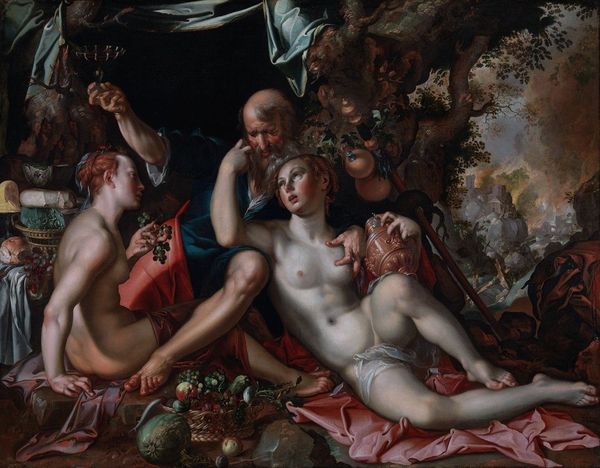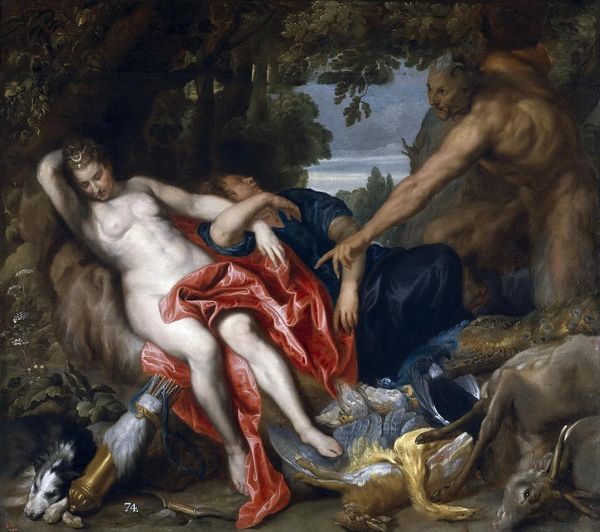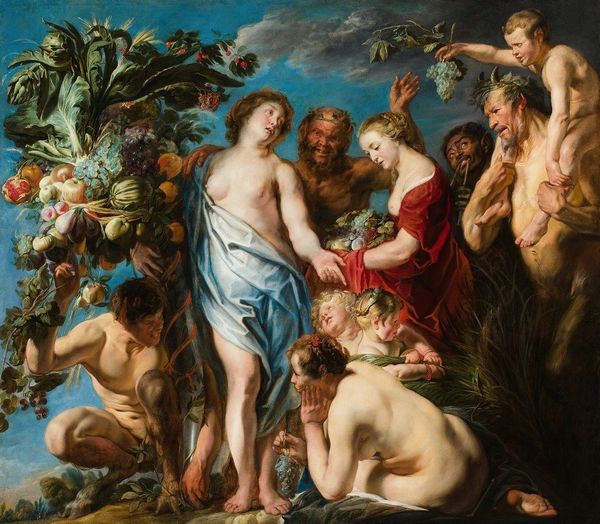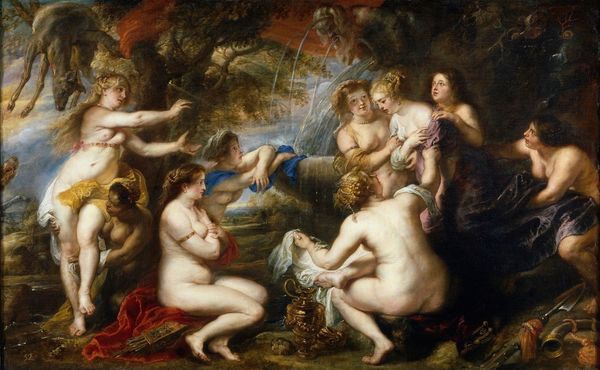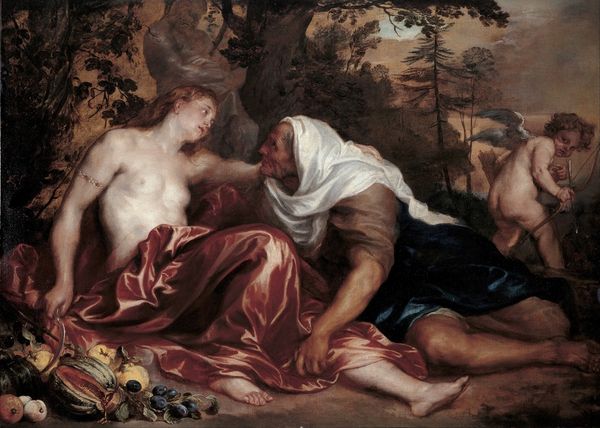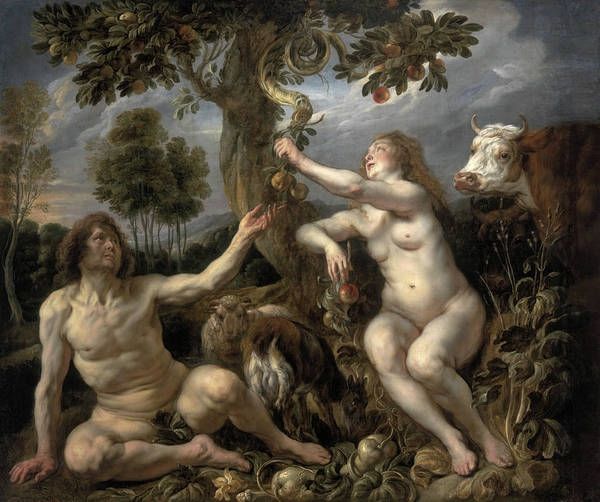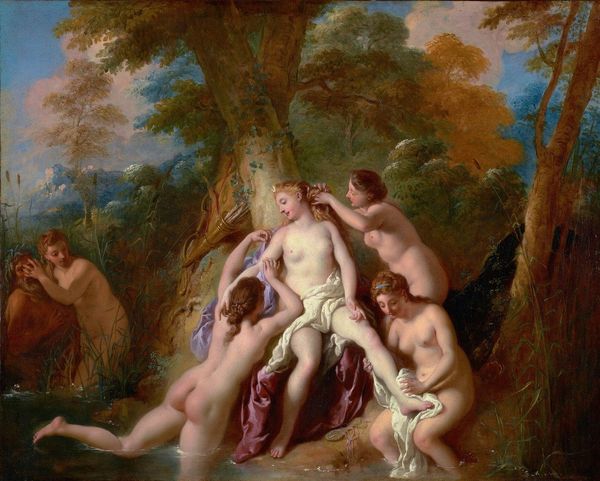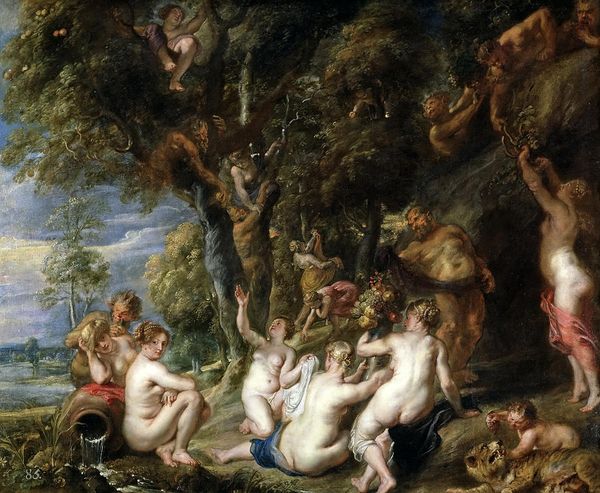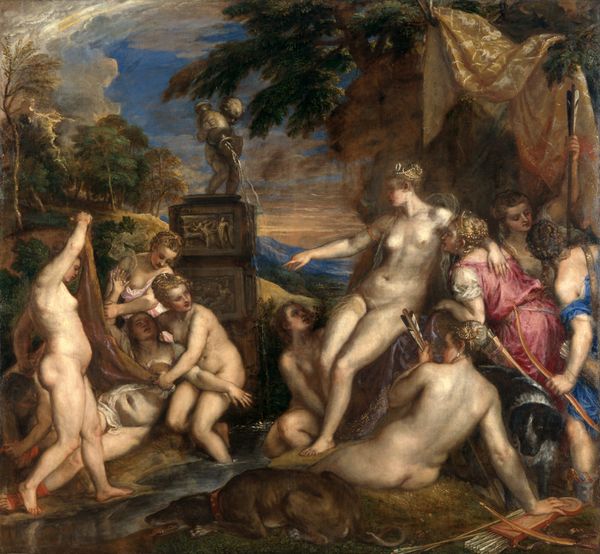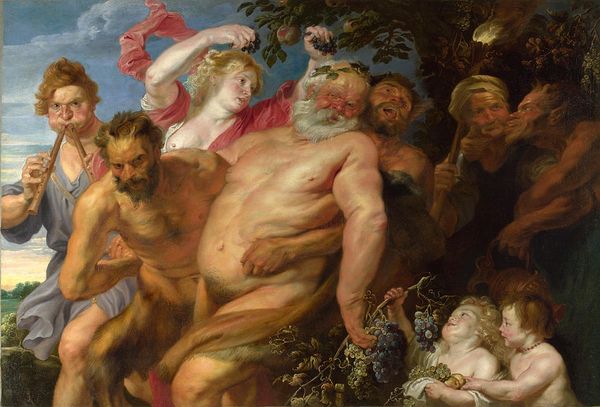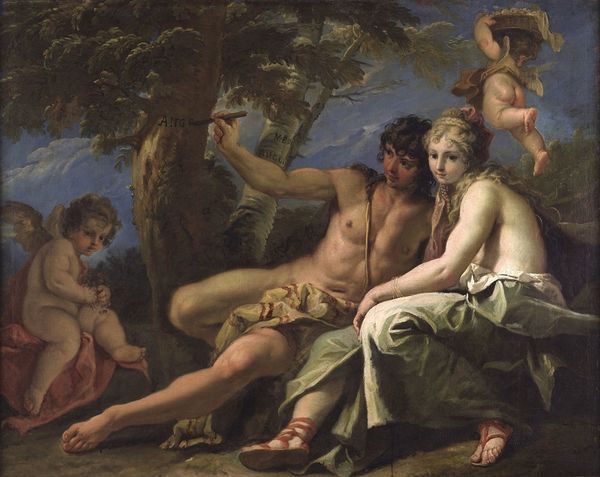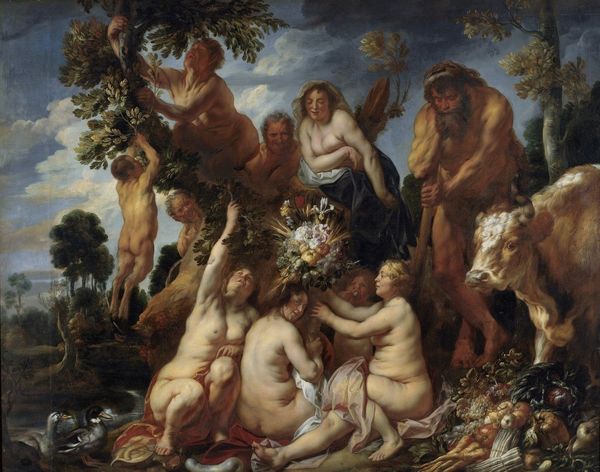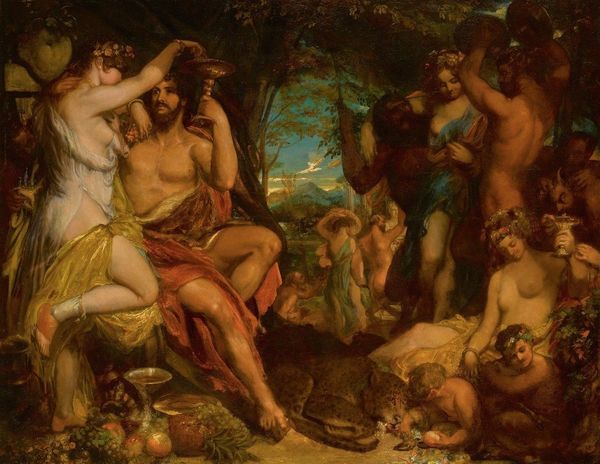
painting, oil-paint
#
allegory
#
narrative-art
#
baroque
#
fantasy art
#
painting
#
oil-paint
#
figuration
#
christianity
#
mythology
#
painting painterly
#
history-painting
#
nude
#
erotic-art
#
christ
Dimensions: 209 x 166 cm
Copyright: Public domain
Curator: Joachim Wtewael’s “Lot and his Daughters,” dating to around 1600, presents a dramatic, if unsettling, narrative scene rendered in oil on canvas. Editor: Immediately, I’m struck by the density of the composition, and that prevailing tension. There’s a discomfort radiating from the poses, from the pallid skin tones contrasting with the darkening sky in the background. Curator: The figures' arrangement in a tight, pyramidal shape certainly intensifies the drama, but examine how Wtewael uses contrasting light and shadow to direct the viewer's eye. Notice the positioning of Lot, centrally placed with his expression seemingly lost, bewildered in the aftermath. It contributes to the complex interplay of lines that create balance here. Editor: Right. The craftsmanship and use of materials, the sheer physicality of the painting, cannot be ignored here. Think of the resources needed—pigments sourced perhaps internationally, a patron’s financial commitment, all fueling Wtewael's labor to create this particular narrative. The consumption of such luxurious pieces by the elite served as an indication of class. Curator: This work also represents a broader context as biblical narratives were incredibly popular subject matter for painting at the time. Wtewael leverages it to show a moment rife with conflict. Observe Lot, the apparent patriarch, framed, or perhaps trapped, by the seductive, though troubled gazes of his daughters. There is the symbolism here of corruption. Editor: And look at that laden table and what it signifies - excess, preparation, even desperation. The abundance serves a deeper role here. It demonstrates both survival, after catastrophe, and impending transgression. In its display we are shown moral excess in every brushstroke. Curator: I see that your points underscore how the artist balances not only formal artistic elements, but a much greater conceptual scale of morality too, presented and perceived, then ultimately judged by us. Editor: Exactly! Through material display, we reveal underlying moral frameworks in our consumption patterns. These can be seen not merely through the painting but behind the painting as well! The conditions that birthed this. Curator: Indeed. So considering how all elements coalesce, we’re left with more than just aesthetics. We see something reflective of its society’s ethics at the turn of the 17th century, or at least some interrogation thereof. Editor: In total, the narrative, materiality, all the factors are permanently ingrained and now a visible representation of time that passed.
Comments
No comments
Be the first to comment and join the conversation on the ultimate creative platform.
